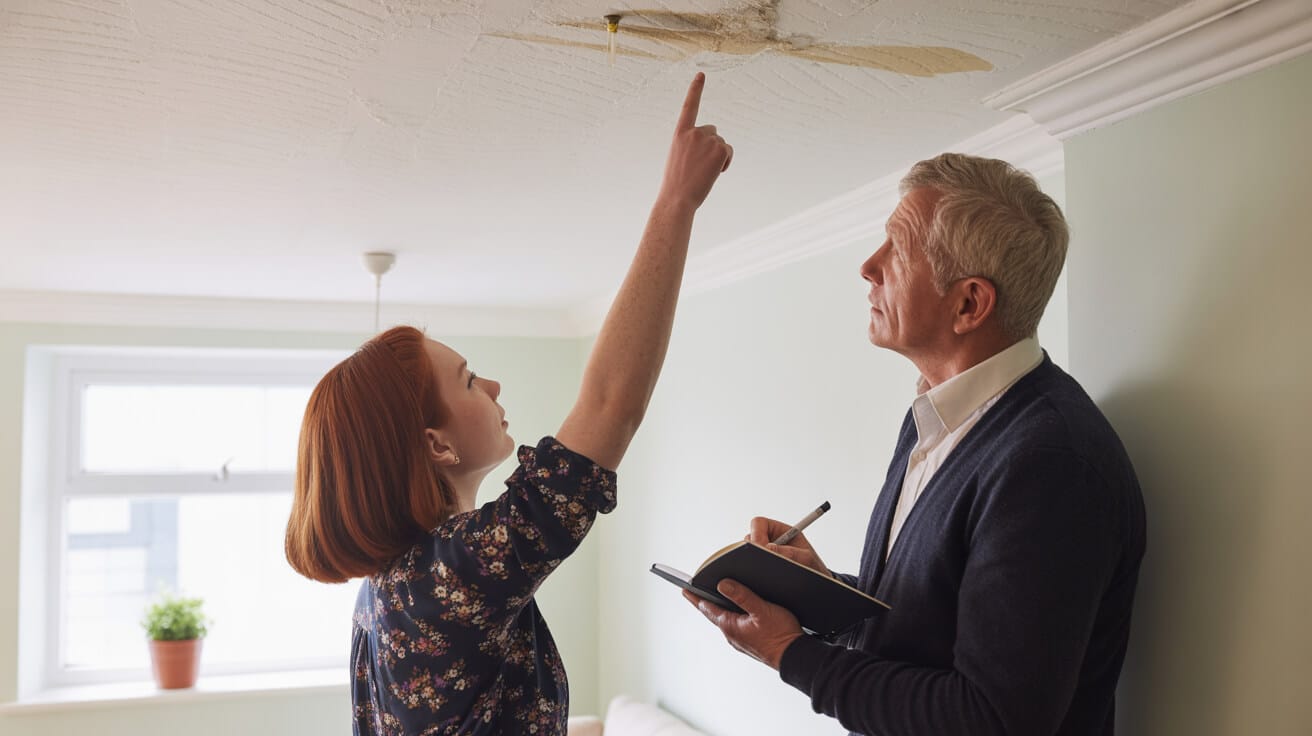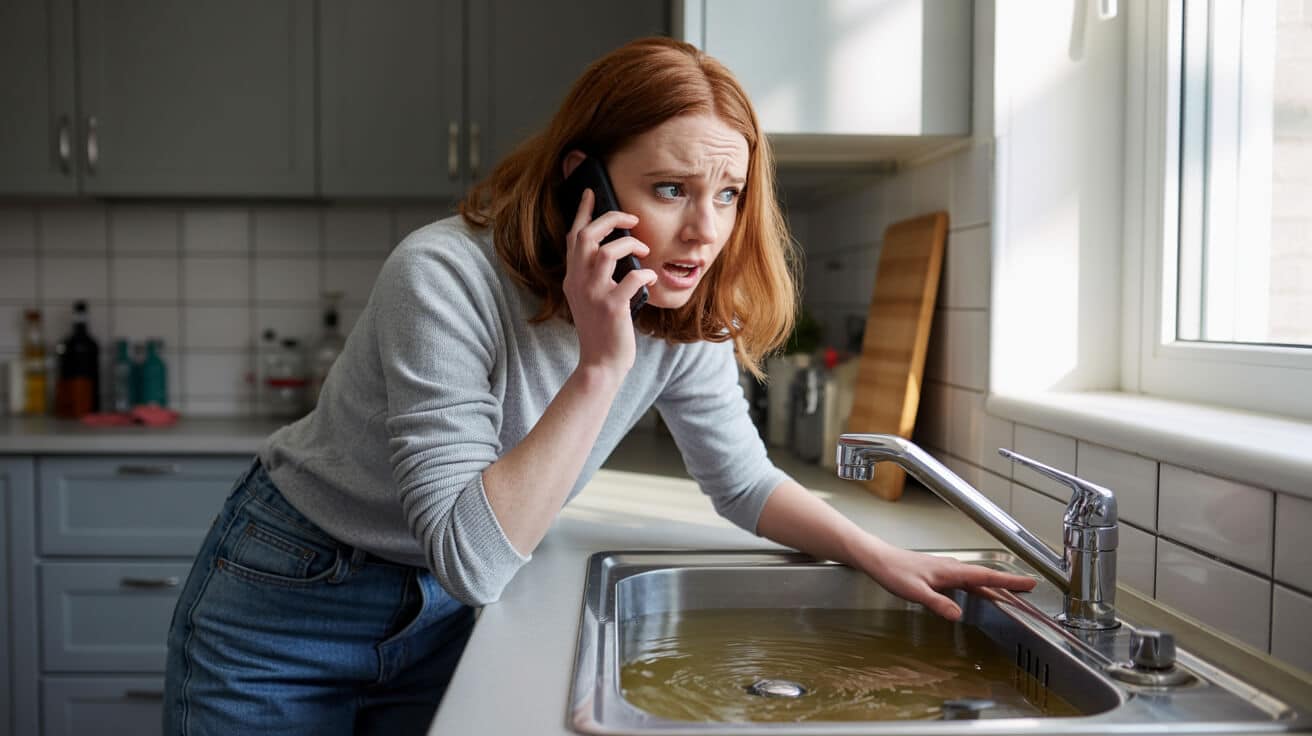 The Best Bathroom Flooring Options a Comparison of Materials
The Best Bathroom Flooring Options a Comparison of Materials
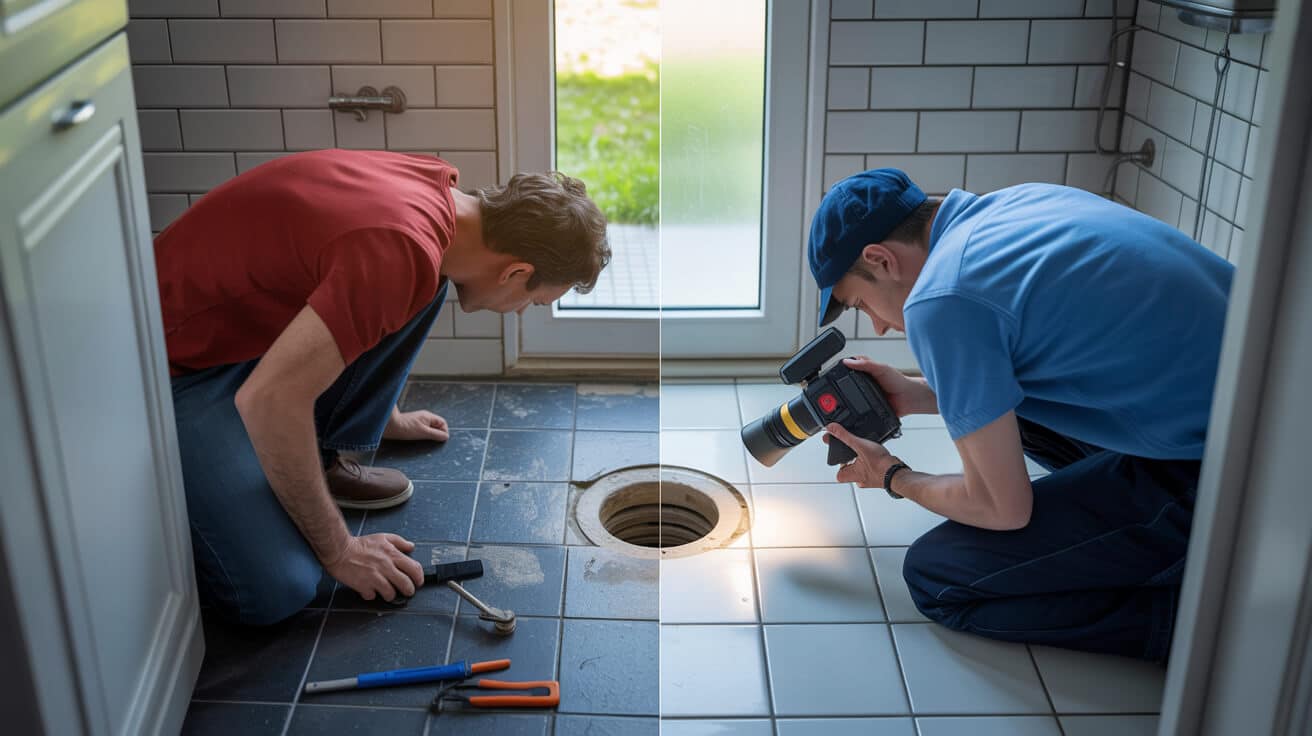
Why Choosing the Right Bathroom Flooring Is a Decision You Can’t Afford to Wing
Every property owner, landlord, or manager faces the same question: will your choice of bathroom floor quietly protect your investment—or silently sabotage it when you least expect? Most bathroom floors fail in the least visible way, costing owners more in the aftermath than they ever saved by cutting corners at the start. If you’re scrolling between tile patterns or weighing up luxury vinyl, the question isn’t just style—it’s risk, compliance, and the pure headache of future repairs.
The floor nobody questions upfront is the one nobody forgets when it fails.
In the UK, regulatory and insurance pressures mean flooring mistakes aren’t just a matter of looks or comfort. Part G and Part H of Building Regulations, WRAS standards, and the expectations of insurance underwriters shape every truly “safe” choice. Here’s where things get real:
- Bathroom floors suffer daily “bad weather”: steam, water surges, harsh cleaners, and abrupt temperature changes.
- One weak slip rating or missing bit of waterproofing? That’s your legal or financial neck on the line—especially if a tenant, child, or visitor slips, or mould creeps up from the subfloor.
- For managed properties and letting stock, a missing compliance photo or product datasheet can block a tenancy, with the new Renters Reform Bill 2024 demanding proof at handover.
The take-home is relentless: there is no “neutral” bathroom floor—every decision places you on the right or wrong side of future cost, risk, and reputation. Good floors are unseen, unremarkable, and completely drama-free for decades. Bad ones are memorable only for the wrong reasons.
Are Porcelain and Ceramic Tiles Still the Best for UK Bathrooms?
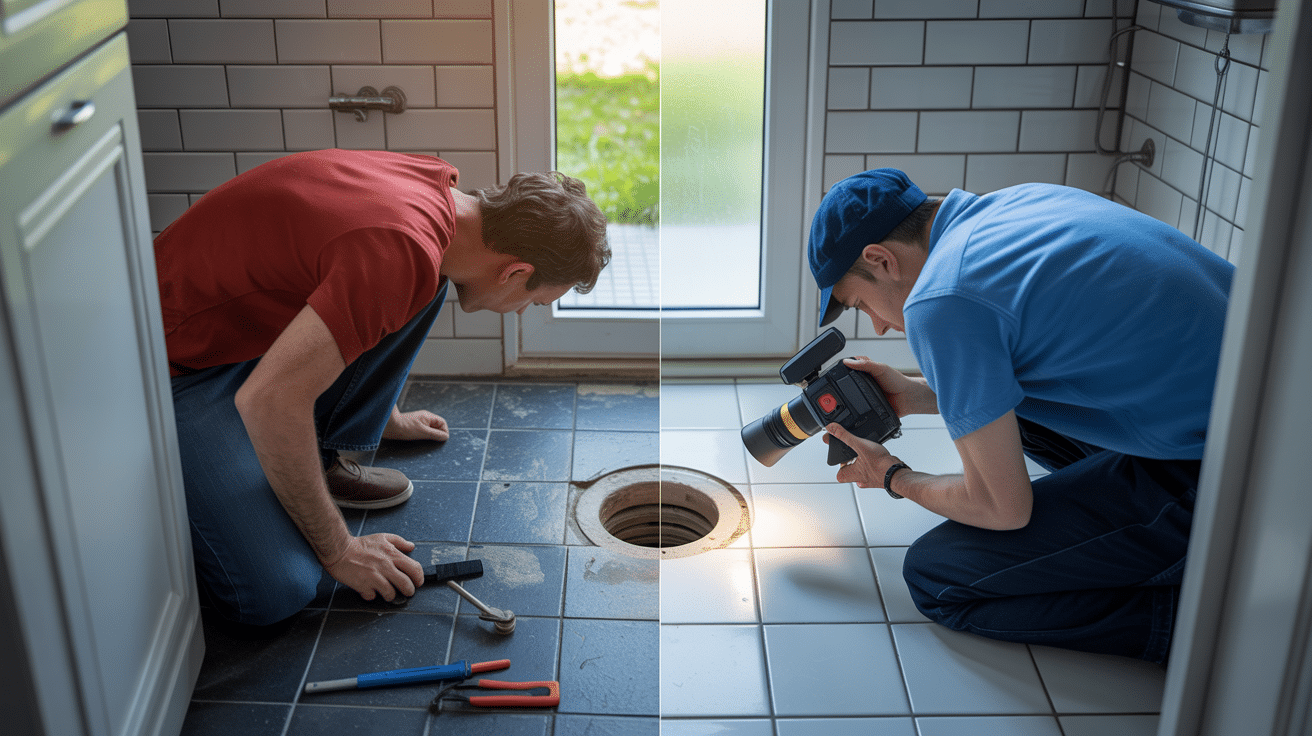
Porcelain and ceramic tiles have sat top of the bathroom food chain for decades—for solid reason. Properly chosen and installed, they turn a damp-prone room into a fortress; mishandled, they create slippery legal traps and never-ending maintenance cycles. Their value isn’t in the material alone, but in how every layer is specified and every certificate logged.
A bathroom tile is only as strong as its underlay and paperwork.
Consider where tiles truly shine:
- Water and stain resistance: is virtually guaranteed when paired with a WRAS-certified waterproof membrane and branded adhesives—nothing else.
- Insurance-approved tiles often come with a slip rating of R10 or higher (critical for wet zone safety), and the best are delivered as a complete “system”: tile, adhesive, grout, and silicone, all matched for warranty compliance.
- Cleanability and hygiene are unbeatable, as long as edges and joints are professionally sealed and documented at instal.
But there’s another side:
- Tiles are cold underfoot unless combined with suitable insulation or underfloor heating. For busy families or high-traffic flats, bare tile can become a comfort trade-off.
- Too many UK bathrooms are let down by glossy, ultra-smooth tiles that flunk slip regulations—now a legal risk factor in rented or commercial spaces.
- Dropping a heavy object on the wrong tile cracks more than just porcelain—replacement can be a lengthy, disruptive project if discontinued product lines aren’t available.
- A lack of compliant instal photos or product sheets at handover? That’s where insurers, surveyors, and letting agents begin their deposit disputes or compliance refusals.
The bottom line: Tiles deliver lasting, future-proof peace of mind when the instal is as robust as the product—record every step, use accredited fitters, and keep documentation visible for every future inspection.
Can Vinyl and LVT Really Withstand the Rough and Tumble of Real Life?
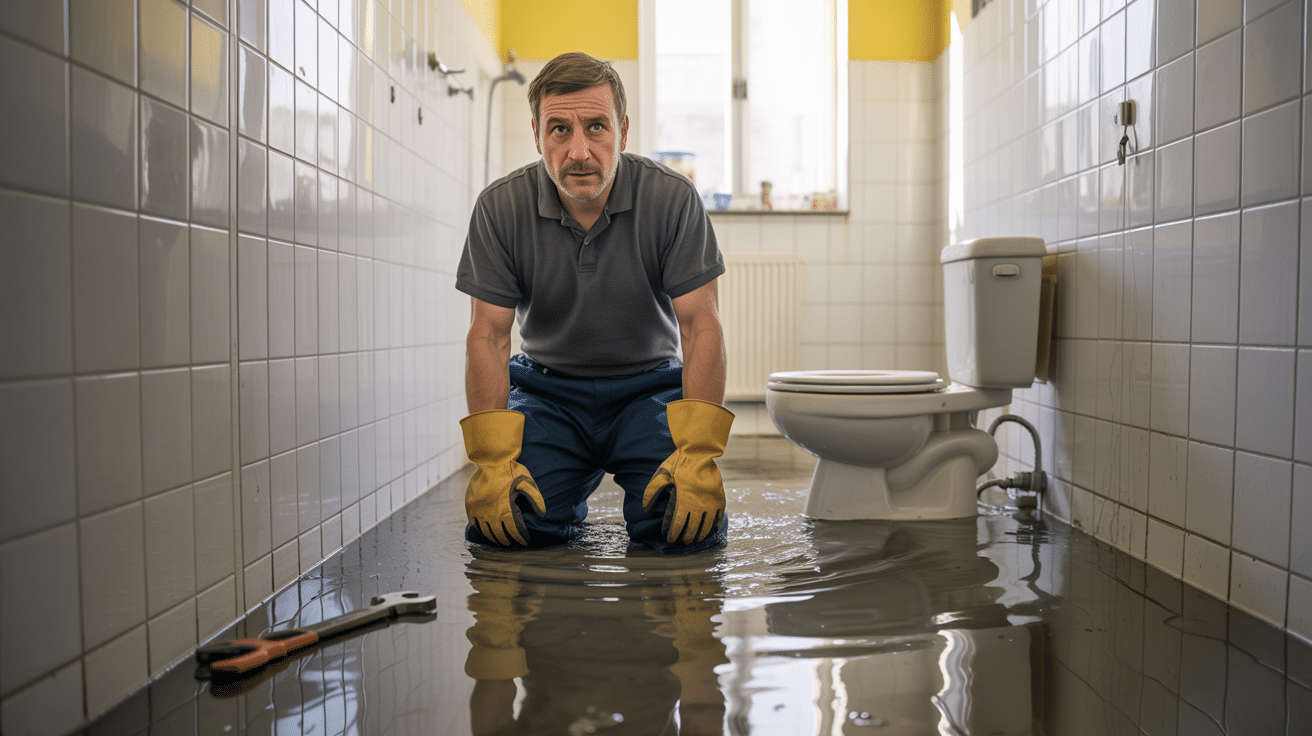
Vinyl and Luxury Vinyl Tile (LVT) have moved well beyond budget bathrooms—they’re now the “smart” solution for properties needing tough, fuss-free floors that shrug off knocks, spills, and busy feet. But the difference between an easy fix and a costly redo? Always comes down to product grade, edge detailing, and evidence of instal.
Vinyl floors only fail when the important bits get skipped or forgotten.
Why so many property professionals now specify vinyl or LVT:
- “Almost waterproof”—with the right edges: Modern LVT, laid with perimeter adhesive and compliant tolerances, is one of the safest mats for water-prone homes—providing you follow manufacturer and WRAS, G3, or WaterSafe guidelines on joint sealants.
- Warmth and resilience: Bare feet in winter, children’s slips, or elderly falls all sit at the heart of vinyl’s appeal. It feels softer, runs quieter, and is a safer bet for family homes and rentals.
- Built-in slip resistance—if you check the certs: Good LVT comes with R10 or higher slip rating, and proves it via documentation—now more vital than ever for landlord leasing, new letting laws, or insurance renewals.
- Low maintenance keeps long-term value: Unlike stone or wood, vinyl and LVT are forgiving to scuffs, chemical cleaners, and even some minor standing water—if those edges and joins are tight.
But remember:
- Lower-end vinyl is a false economy in high-traffic rentals—expect denting, fading, or “ripple” within a year.:
- Edge-failure disaster: Most hidden water damage happens when fitters float a floor or neglect trims. Leaks reach the subfloor, so by the time you spot an issue, you’re already facing a large-scale repair.
- Warranties demand instal evidence: A growing number of insurers and manufacturers demand a photo log, batch numbers, and adhesive codes. Lack of these can void both warranty and insurance—a small return for a big future outlay.
A robust LVT instal, documented and certified, is the “set-and-forget” option for most reality-checked properties, especially in the contest of rental yield versus long-term liability.
Is Rubber Flooring Just for Hospitals—or the Secret Safety Hack for Modern Homes?
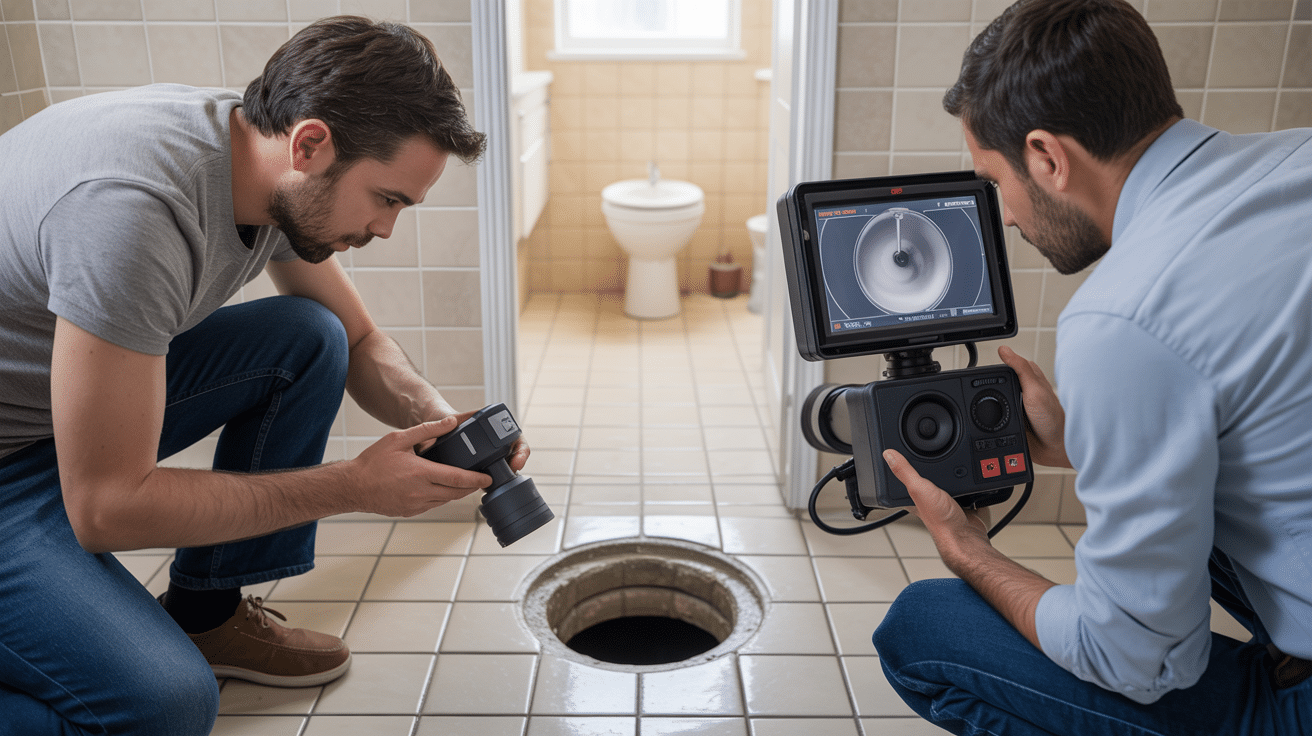
Rubber floors are quietly redefining what “premium” safety and zero-fuss up-keep look like. For anyone serious about compliance, accessibility, or children’s (and elders’) safety, rubber now holds advantages the other materials can’t quite match. The unique appeal? Seamlessness, silent warmth, and the ability to turn any bathroom into a zone where neither lawsuit nor accident can quietly breed.
The safest floors are the ones you barely notice at all.
What sets rubber apart:
- Unbeatable slip resistance: The right rubber tile or sheet, as specified for healthcare or wet rooms, beats R10 on slip ratings—valid for insurance, letting compliance, and peace of mind.
- Delivers comfort and quiet: Rubber absorbs sound, softens every footfall, and keeps the chill away—a bonus for children or elderly relatives.
- Seamless, “no places to hide” instal: Professionally sealed, edges heat-bonded and coved up walls, rubber floors create a barrier that sidesteps bacteria altogether—almost no other material offers similar health insurance.
- Compression, cleaning, and chemical resistance: The best commercial-grade rubber shrugs off bleach, disinfectant, and heavy traffic.
A few cautions:
- Aesthetics split opinion: Industrial overtones and “speckled” finishes are a style leap for some; site samples are essential and worth the time.
- Expense upfront, with slow-burn ROI: The initial bill is higher, but years of trouble-free use and reduced replacements swing the long-term maths.
- Domestic-grade? Buyer beware: Real anti-slip and durability only come from commercial or WRAS/BS-accredited sheets—not lookalike rubber roll-found in DIY chains.
If unyielding safety, hygiene, and future compliance are the goal, rubber’s “hospital legacy” now looks ahead of the curve.
Does Investing in Natural Stone Flooring Actually Pay Off—or Add Complexity?
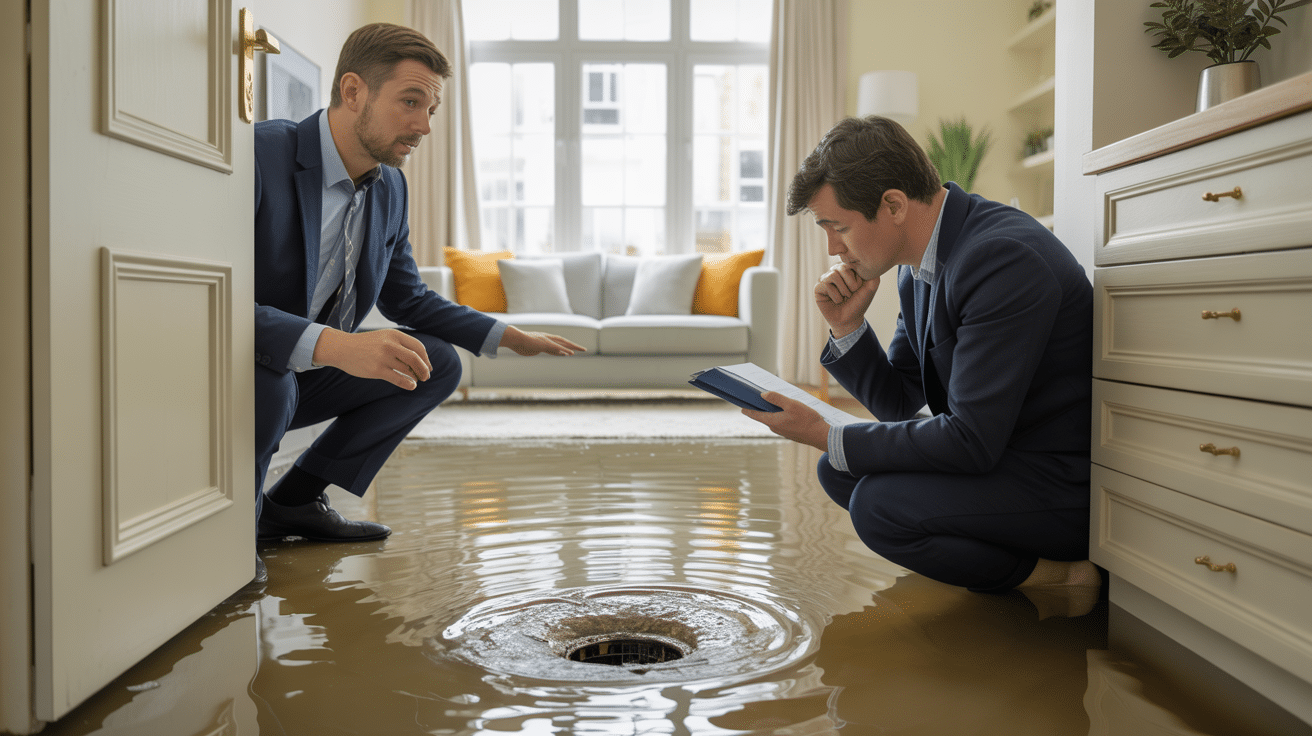
Natural stone redefines luxury in UK bathrooms and never fails to set properties apart. But prestige comes with maintenance and insurance strings attached. From a compliance or cost angle, a stone floor is a statement—one that demands stewardship, paperwork, and specialist trades every step of the way.
The least forgiving bathroom floor is the one that costs the most to get wrong.
Where stone delivers:
- It’s a long-term value statement: —raising rental and resale prospects (*HouseBeautiful.co.uk*), and lifting property value, provided ongoing care and documentation are clear.
- Stops daily wear in its tracks: Even under thousands of footsteps, properly sealed and maintained stone rarely cracks or dents. With annual care, it outlives most rivals.
- Elevates “wow-factor” for tenants and buyers: Tangible in every estate agent’s tour, stone floors can drive up closing offers and yields.
But that reward is not for the casual or unprepared:
- Slip hazard with polished finishes: Unsealed or glossy stone in wet areas is a known accident hotspot—never instal without R10+ non-slip certification at handover.
- Yearly aftercare is non-negotiable: Stone must be re-sealed and inspected at least yearly, with visible records. Tenants and letting agents often use lack of documented care as grounds for withholding deposits or denying claims.
- Specialist installation is a must: Stone failures often occur due to poor prep, bad adhesives, or skipped WRAS/WaterSafe checks—all of which block insurance claims and can cost more to tear out than many cheaper floors ever saved.
- Insurer and compliance scrutiny: Installation must not only be perfect, but also evidenced—the new normal for properties aiming at the upper end of the rental or owner-occupier market.
Stone repays the fuss with relentless, lasting value—but only when paired with next-level diligence and compliance discipline.
Can Laminate or Engineered Wood Stand Up to the Wet Realities of a Bathroom?
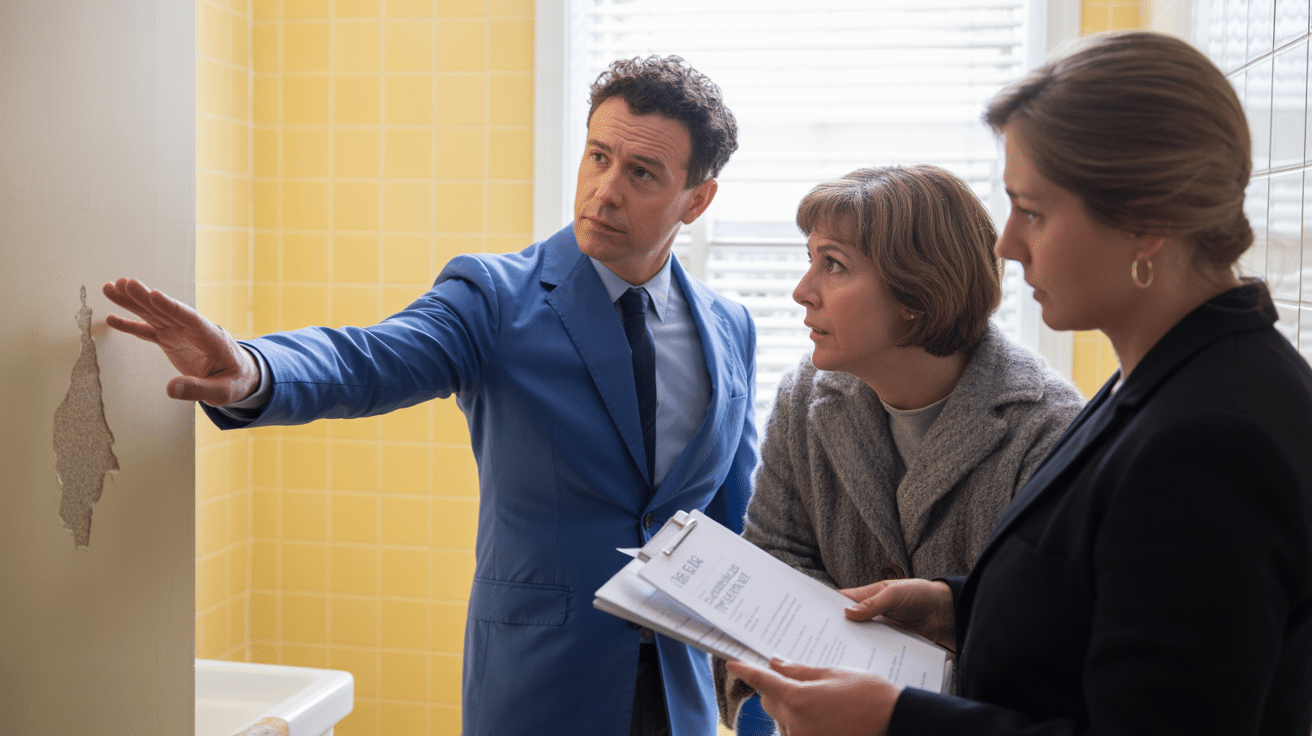
Few floors tempt renovators more than wood-effect laminates—with promises of luxury warmth and quick instals at a “fraction of the cost.” But bathrooms don’t play fair, and the risks, if casually ignored, can cancel out every up-front savings (or even breach letting agreements).
The bathroom disaster nobody talks about is always a slow leak—right under your wood grain.
Where and when wood might work:
- Low-impact rooms only: Guest WCs, powder rooms, or cloakrooms with infrequent use fare best. Even with “waterproof” markings, always get the manufacturer’s paperwork and compliance stated in writing—not just the product box.
- Premium, bathroom-rated products: Only consider laminates and engineered woods listed as suitable for “bathroom” use, with sealed edges, click-locks, and evidence of permeability tests.
- Fast renovations or property staging: If time or budget are tight, and future uplift or full refit is planned.
But the downsides are significant:
- Hidden leaks win eventually: Drips or minor splashes seep under the boards, leading to black mould, warping, or premature plank failure—a recipe for insurance denials and letting disputes.
- Nearly all generic warranties specifically *exclude* bathrooms: Evidence of suitability for high-moisture zones is critical for both compliance and ongoing cover.
- Slip gets riskier as the finish erodes: Even a few months of use and cleaning can wear away safe finishes, making the floor a long-term liability.
- Repairs mean starting over: Replacing a single area is rarely possible without visible joins or mismatched grains.
In all but the best-case scenarios, laminates and engineered wood need careful oversight, with edge and subfloor protection, explicit documentation, and a plan for strict maintenance or future room change.
What Do UK Laws and Insurers Actually Demand from Bathroom Floors?
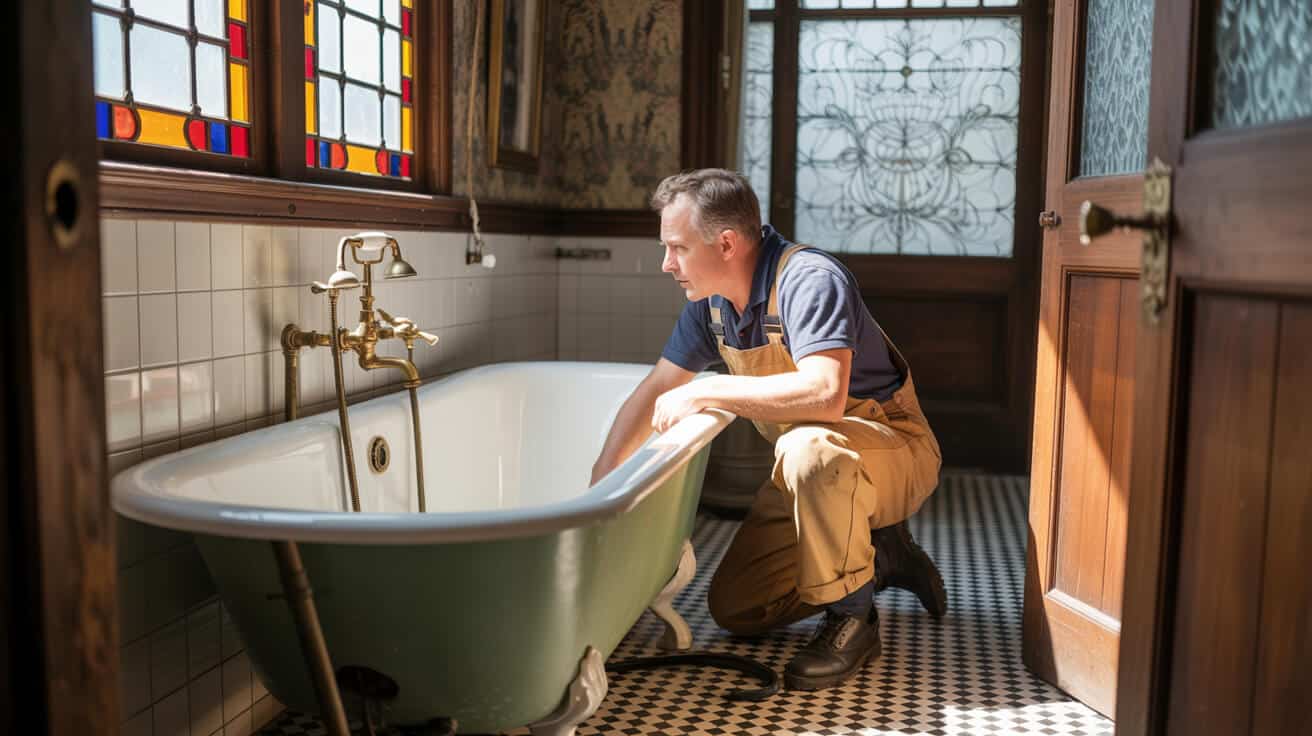
Claims disputes, letting refusals, and “voided cover” stories almost always start with small details that looked trivial at instal. What building control, modern insurance, and the new breed of property compliance really demand goes beyond the promotional leaflet.
The perfect bathroom floor is invisible in daily use and bulletproof to scrutiny.
The new UK baseline, regardless of material:
- Slip ratings are non-negotiable: Every fit must deliver R10+ (or >36 PTV), with certification attached on handover (critical under Health and Safety Executive guidance for managed and multi-user premises).
- Waterproof installation records, not just “water-resistant” claims: Insurers, surveyors, and letting agents want photographic evidence and paperwork for membrane instal, seam/edge finishes, and appropriate adhesive use—not just a “waterproof” label.
- Use of accredited professionals only: WRAS, G3, and WaterSafe-registered installers become your best proof against future disputes or compliance checks—especially for unvented/pressurised hot water, showers, or Part G/H-related work.
- Product origin and care schedule: At every handover, you need the certificate or user guide for what was fitted. “Standard cleaning” advice isn’t enough: documented maintenance increases rental and insurance leverage.
Ignore any one link, and you risk unplanned costs, legal action, failed new tenancies—or, worst of all, a blank spot in your paperwork when a claim suddenly needs defending.
Arrange a Trade-Qualified Bathroom Flooring Consultation with Plumbers 4U Today
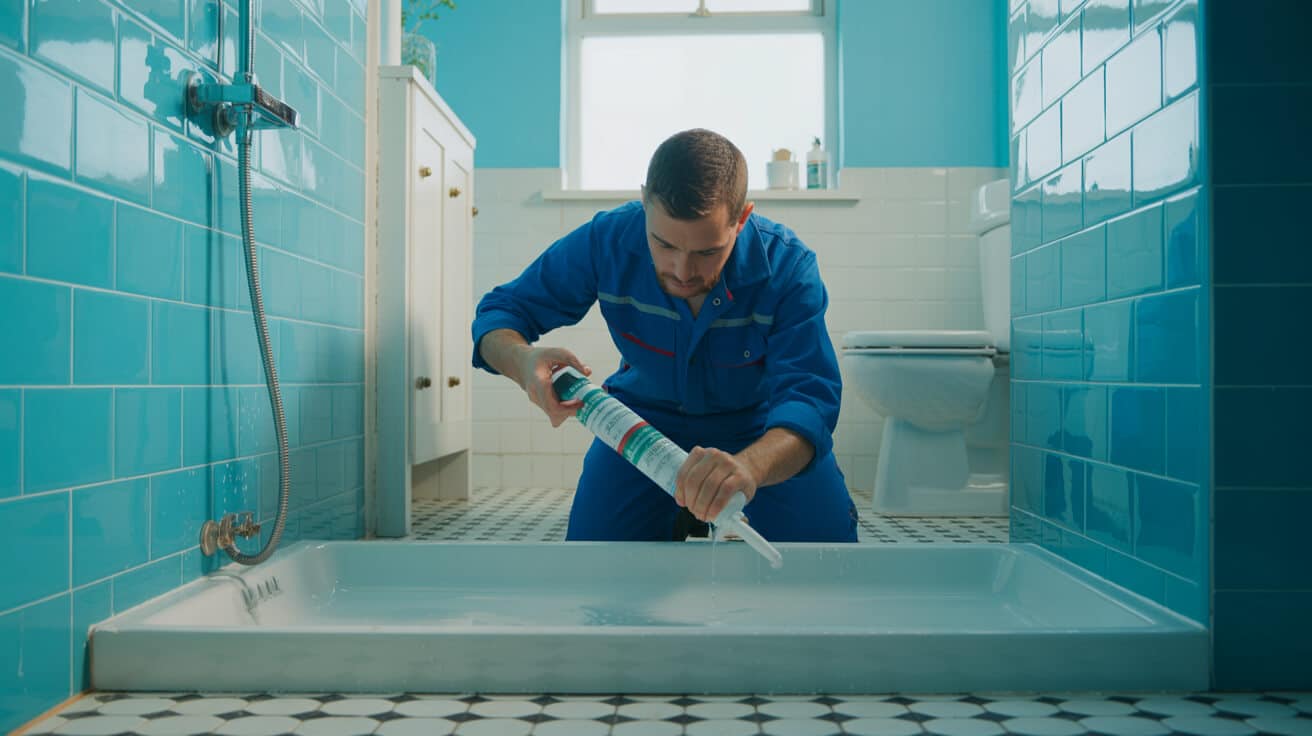
Every calm, compliant, “futureproof” bathroom floor has a backstory: skilled fitters, code-savvy planners, clear documentation, and the type of aftercare only a trusted name delivers. The cheapest floor, in reality, is the one you never have to refit—or explain to an adjuster, agent, or boardroom.
Plumbers 4U doesn’t gamble on product brochures or best guesses. Instead, you get:
- Fully certified, engineering-led installation teams: WRAS, WaterSafe, and G3 credentials come standard—with every regulation and legal code followed line for line.
- Documented fitting, compliance, and aftercare packages: Get every photo, every membrane, every slip rating and product manual in a handover pack built for peace of mind.
- Transparent expertise: Your instal includes all edge and waterproofing works, signed and staged for future letting and insurance requirements.
- Client-first philosophy: You’ll always know who leads your project, understand exactly what went in, and can reach out for future support or compliance needs as laws evolve.
The only true bathroom upgrade is the one you never have to question—or revisit.
Book your compliance-driven flooring survey or instal today—Plumbers 4U has built its reputation on silent, safe bathrooms, respected by agents, insurers, landlords, councils, and residential customers UK-wide. Don’t risk joining the list of costly “quick fix” stories. See what peace of mind, installed once and properly, actually feels like—with Hector Gauge and team behind you.
Frequently Asked Questions
What’s changed in 2024 for bathroom flooring standards and why does it matter to your property?
Bathroom flooring standards in the UK have shifted fast—compliance, safety, and paperwork now outweigh looks or cost-cutting. For 2024, only certain flooring types pass regular audits: commercial-grade porcelain tile (R10–R12 slip rating and above), luxury vinyl tile or high-grip safety vinyl with batch traceability, and specialist rubber surfaces for step-free zones. Each requires WRAS-approved adhesives, precise perimeter seals, and digital instal logs—not just a nice finish.
Fit-out statements and batch codes now matter more than showroom gloss: real compliance works in writing, not wishful thinking.
How do modern compliance checks actually operate?
- Regulations in play: Building Regulations Part G and H, BS EN 14411 for tile, and BS EN 13845 for vinyl now underpin most insurance and landlord audits.
- Audit focus: Inspectors and loss adjusters check for R10/R12 slip certificates, edge-seal photos, tanking membrane proof, and batch/installer codes on every job.
- Documentation culture: Insurers and managing agents expect digital handover packs, not just invoices or quotes. Batch documentation, installer qualification, and full job chronology are fast becoming the minimum.
Why does this matter across property types?
Landlords, block managers, and even single-home owners now need to present real paperwork if anything goes wrong—flood, occupancy turnover, or accident. That new bathroom floor is only as good as its compliance trail; a missing certificate or skipped photo can void coverage or delay move-ins for weeks. Properties with “assume it’s compliant” instals are the first to hit disputes.
The 2024 decision logic
- Porcelain tiles—if R12 and edge-grouted—lead audits for family and rental homes, easily escalating value and claim-readiness.
- LVT and safety vinyl are now the mainstays in managed properties—waterproof, slip-rated, quick to audit.
- Laminate is almost always ruled out by insurers for wetfloors.
- Every product, from adhesive tub to bath panel, needs batch and fitment records—no exceptions.
Upgrading your risk management starts the moment you spec the floor, not when the invoice arrives. In 2024, only what’s documented gets you covered—or turns your handover into a headache.
Why do bathroom floors so often fail insurance or compliance inspections—even with premium products?
Most floor failures in UK bathrooms trace back to missing proof, not bad materials. The era of “fit and forget” is gone: insurers, PRS managers, and local authorities routinely void claims if you lack signed instal logs, batch evidence, or digital photos of each step. Loss adjusters have seen it all before—gleaming floors that mask subpar tanking membranes, WRAS-violating adhesives, or slip test “guesses” unsupported by paperwork.
You don’t own proof if all you have is a receipt: insurers and agents want a digital chain, not just photos after the fact.
The most common triggers for failed audits in 2024:
- Perimeter shortcuts: Floating vinyl or “edgeless” laminate instals create water traps—photos or edge-seal logs are mandatory now for audit signoff.
- No subfloor/evidence log: DIY fitters skipping digital surveys, professionals skipping moisture readings or photo-logged steps.
- Missing installer credentials: If your fitter can’t supply WaterSafe or G3 numbers, expect problems with insurers or council signoff.
- Documentation gaps at handover: If tenancy or handover files lack WRAS, batch, or job log, disputes and deposit delays are almost guaranteed.
What steps actually prevent these failures?
- Hire only installers who provide digital step-by-step logs, batch-labelled materials, and full WRAS/WaterSafe certification as part of every job.
- Match your instal pack to each compliance check—proof of membrane, edge, and adhesive are now expected, not optional.
- Handover must include aftercare and cleaning sheets—seemingly minor details that can unlock or block a future insurance payout.
Well-documented installations don’t just keep everyone happy: they ensure a compliant bathroom floor can’t be questioned, whether by insurers, agents, or future tenants.
How do slip ratings, safety certifications, and warranties now drive flooring choices past simple aesthetics?
Slip resistance and airtight certification have overtaken visuals in the bathroom flooring decision process. The reality: anyone managing family, rental, or high-traffic properties gets audited for R10/R12 slip performance, PTV 36+ certification, and explicit manufacturer/installer warranties. It’s not just about comfort—liability, deposit protection, and even insurance eligibility hinge on having a digital audit trail for both product and fit.
No matter how stylish the tile, without a slip cert and fit log, your property stands alone at claim time.
What makes slip-resistance and warranty so central now?
- Audit priority: Installers must supply both manufacturer slip certificates and batch proof. If your floor isn’t R10 or better, expect audit pain in a managed property.
- Warranty layering: Landlords and commercial entities should insist on two warranties: supplier (for the product) and fitter (for the installation).
- Resolution windows: Strong warranty cards and digital claims mean fast resets if floors fail or degrade—some vendors now offer “blockchain” or app-based registration for higher-stakes landlords and councils.
Material risk assessment table (2024 edition)
| Floor Type | Key Audit Spec | Warranted Lifespan | Where Preferred in UK Audit |
|---|---|---|---|
| Porcelain (R12) | R12 / 36+ PTV | 10–15 yrs | Wet zones, rental, resale |
| LVT/Safety Vinyl | R10–R11 / 36+ PTV | 7–12 yrs | PRS, social housing, family |
| Structured Rubber | R10+, 45+ PTV | 10–15 yrs | Accessible, supported |
| Laminate | Up to R9 only | 2–5 yrs | Rarely passes rented audit |
| Sealed Stone | Variable | 10–20 yrs | By-pro only if papered |
It’s no longer about what you like—it’s about what stands up to scrutiny, and how fast you can show the proof when it counts.
Which step-by-step procedures are non-negotiable for legal compliance and dispute-proof bathroom flooring instals?
The window for shortcuts has slammed shut: British bathroom flooring now follows a step-locked, paper-trail process. From the first subfloor probe to the final warranty handover, missing even a single stage risks compliance and future claims. WaterSafe and G3 compliance, WRAS adhesives, and batch-sealed materials run through the backbone of every instal, and failure at any phase is not just technical—it’s operational.
Detailed process for a dispute-immune installation:
- Subfloor & Environment Survey: Moisture readings plus before-photos, all logged to address.
- Material Vetting: Only select slip-rated, batch-coded products corresponding to your risk profile—family, HMO, accessible, etc.
- Verified Installation: Installer logs membrane, adhesives, product codes, and edge finish to audit file.
- Perimeter / Sealing Stage: Mastic, coving, and transition strips checked and photo-logged; no “edgeless” passes audit now.
- Certified Sign-off: Digital pack—installer, client, and agent sign; files stored per property record.
- Aftercare Handover: Cleaning, claim, and warranty guidelines presented in both digital and physical copies.
Each new certificate or photo is a line of defence against disputes—insurance and councils look for what’s logged, not what’s assumed.
Who gains (and how)?
- Homeowners: Audit-ready resale, simpler remortgage, and bulletproof warranty cover.
- Landlords/property managers: Fewer deposit wrangles, insurance excesses trimmed, audit delays slashed.
- Authorities: Faster signoff, less ground for tenant-initiated dispute.
Compliance has moved from a “nice-to-have” to a core operational risk lever—it pays to get obsessive at every stage.
What unexpected returns and operational gains come from compliance-locked floors and certified installers?
Think of compliant floors as operational leverage: every photo, code, and certification in your asset register translates to real speed, fewer calls, and bigger margins. Landlords, managing agents, and site owners are discovering that proper installation documents reduce tenant churn, accelerate insurance resolutions, and unlock the fastest routes to renewal or resale.
A compliant floor with a digital audit pack doesn’t just cover you—it fast-tracks every future move, sale, or claim.
New-found benefits surfacing in 2024:
- Speed: Letting and insurance renewals are now almost instant if instal logs are linked by address; RICS reports two-week lower average voids versus non-compliant comparables.
- Credibility: Fitters that capture and store WRAS/WaterSafe files on instal double as your compliance bastion. Nearly all block agents cite this as mandatory.
- Cost control and asset value: Floors installed by certified teams with batch traceability decrease claims excesses, raise EPC scores, and often boost rental band eligibility for managed stock.
- Audit “fast lane”: With digital compliance packs, block managers get signoff and renewals in hours, not weeks.
If you want your asset to move, rent, or survive scrutiny, compliance is now the best currency—ask for it at material, installation, and audit phase or risk being left behind.
How does partnering with a compliance-driven installer like Plumbers 4U future-proof your bathroom project and protect every stakeholder?
Choosing a team with WaterSafe, WRAS, and full G3 credentials isn’t just insurance—it’s future-proofing your property investment. Plumbers 4U covers every phase: digital job logs, batch-certified materials, WRAS adhesives, aftercare packs, and sign-off all become part of your property’s legacy file. Their process means no more scrambling for documentation under audit, and your warranty is airtight—from first visit to letting/insurance renewal.
A Plumbers 4U-completed instal is more than just fit-and-forget. It’s your ongoing shield against claim denials and costly rechecks.
Unique advantages of this compliance-first approach:
- Total digital handover: Every property gets its own logbook: instal stages, warranties, compliance proof, and care packs all linked for surfacing in audits or future sales.
- Installer credentials on tap: No call-around required—every fitter’s regs and WaterSafe status is available on demand to agents or insurers.
- Lightning-fast certifications: Letting, handover, and insurance alike—all supplied immediately at the end of the project, no follow-up hassle.
- Lift in asset value/reputation: Properties certified to the latest 2024 benchmarks command attention, rent/sell quicker, and protect all involved parties.
For home and asset owners who want to safeguard value as much as habitability, Plumbers 4U’s “compliance by default” approach locks out surprise costs and delivers friction-free, audit-hardened results for years to come.

